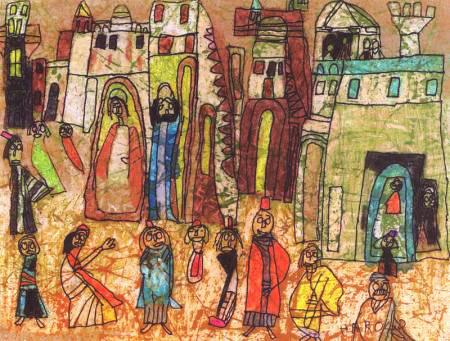 The editor of L'Encyclopédie de L'Agora and well known newspaper chronicler and philosopher, analyses actuality through the looking glass of Belonging.
The editor of L'Encyclopédie de L'Agora and well known newspaper chronicler and philosopher, analyses actuality through the looking glass of Belonging.
Communities
Associations or teams are created to accomplish specific tasks. Communities, on the other hand, are where we are born, live and die. They are places of being more than places of doing, and are threatened when doing takes precedence over the simple joy of being together. And those who are likely to suffer the most are the most vulnerable members of community.
A good indicator of the quality of community life is how long it takes to discover that someone who lives alone has died at home. This was the indicator Jane Jacobs used to compare two Chicago neighbourhoods during the heat wave of 1995. Noting that one neighbourhood had 90 percent fewer deaths than the other, she attributed the difference to the higher density of the former, which increased people’s connections and reduced isolation.
Harold Lejeune, L'Arche Beloeil
Ivan Ilich – whose name is associate with the notion of conviviality – predicted the crisis of 2007-2008, more worrying than those which preceded it, the last perhaps before the great implosion which he saw as inevitable. “Against the threat of a technocratic apocalypse, I offer the vision of a convivial society,” he wrote at the beginning of the 1970s. The word “convivial” is not a...
Newsletter
Jacques Dufresne's
Blog
 The editor of L'Encyclopédie de L'Agora and well known newspaper chronicler and philosopher, analyses actuality through the looking glass of Belonging.
The editor of L'Encyclopédie de L'Agora and well known newspaper chronicler and philosopher, analyses actuality through the looking glass of Belonging.
Loneliness affects one in ten people in France
Preventing Home Foreclosures - a Promising Innovation in Philadelphia













